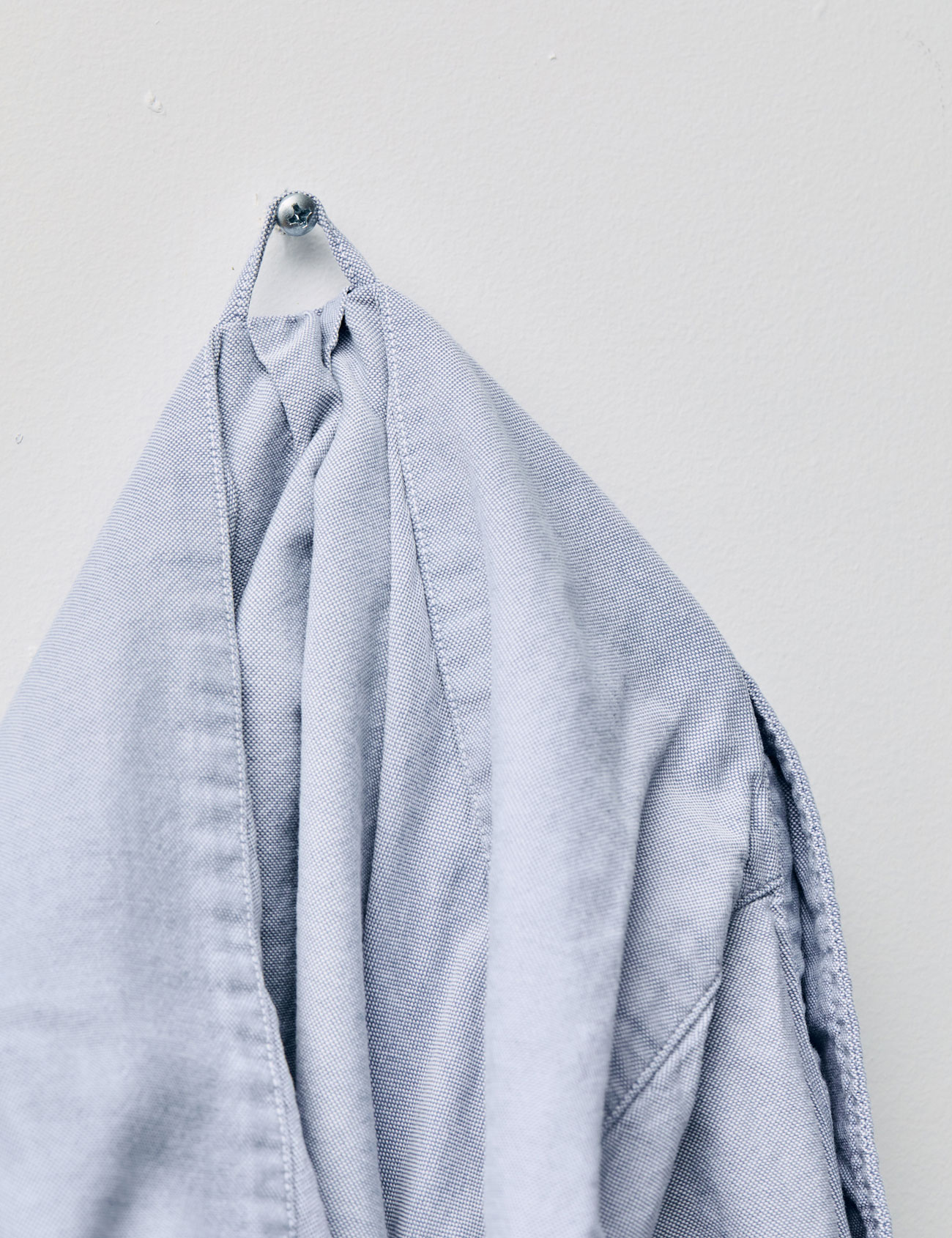Welcome to Further Details, a recurring column where we investigate what purpose an oft-overlooked product element actually serves. This week: that small loop on the back of your shirt.
More than likely, it’s on your favorite button-down shirt. A small loop of fabric located at the back of the shirt is easy to miss, and unless you’ve somehow put your shirt on backward, you’d almost never notice it. Found at the back of the collar or at the center of the yoke (the panel of fabric that spans the upper portion of the shirt, from shoulder to shoulder), this little detail is most commonly known as a locker loop and it has a very specific purpose that goes all the way back to the mid-1900s.
Unlike many menswear origin stories, this one doesn’t trace back to the military. But, like many others, this inconspicuous feature is linked to America’s Ivy League schools. But before it became synonymous with East Coast prep, the detail was said to have first appeared on East Coast sailors’ garments during the first half of the 20th century. With limited room, ships were outfitted with space-saving lockers instead of closets. Because these lockers weren’t wide enough to accommodate a clothing hanger, shirts were sewn with fabric loops that could hang on hooks inside of the lockers. Hanging, instead of folding, also helped prevent shirts from getting wrinkled.
The locker loop gained popularity and eventually made its way onto dry land when Gant Shirtmakers incorporated the detail into its line of oxford cloth button-downs. As the official fashion brand of Yale, Gant produced shirts that were a mainstay on the New Haven campus, informing popular men’s style throughout the U.S. in the 1950s and 1960s.

Locker loops were used in collegiate locker rooms, but as the style became more popular, the loop took on another purpose off the hook. It eventually became a way to signal romantic intent and young women would tear the loops from the shirts of the young men they fancied. Some of these young men would even cut off the loops altogether to show that they were already spoken for. In return, women would wear their newfound boyfriend’s scarf.
Because of the locker loop’s ubiquity, it was later taken advantage of in unwelcome ways — intact loops were routinely yanked and ripped for fun. But, roughhousing wasn’t the worst of it. In some instances, an intact loop was used as a way to stoke homophobia and imply that not only was the wearer not in a relationship, but they were gay. It was called things like ‘fruit loop’ and ‘fairy tag’, among other derogatory and offensive nicknames.
Today, the locker loop is no longer seen as a symbol in popular culture and it remains an essential element of button-down shirts from makers like Brooks Brother, Gant and Gitman Vintage. And while you may or may not use this heritage design feature for its intended purpose — hanging it in a locker — you’ll at least know why it’s there.


